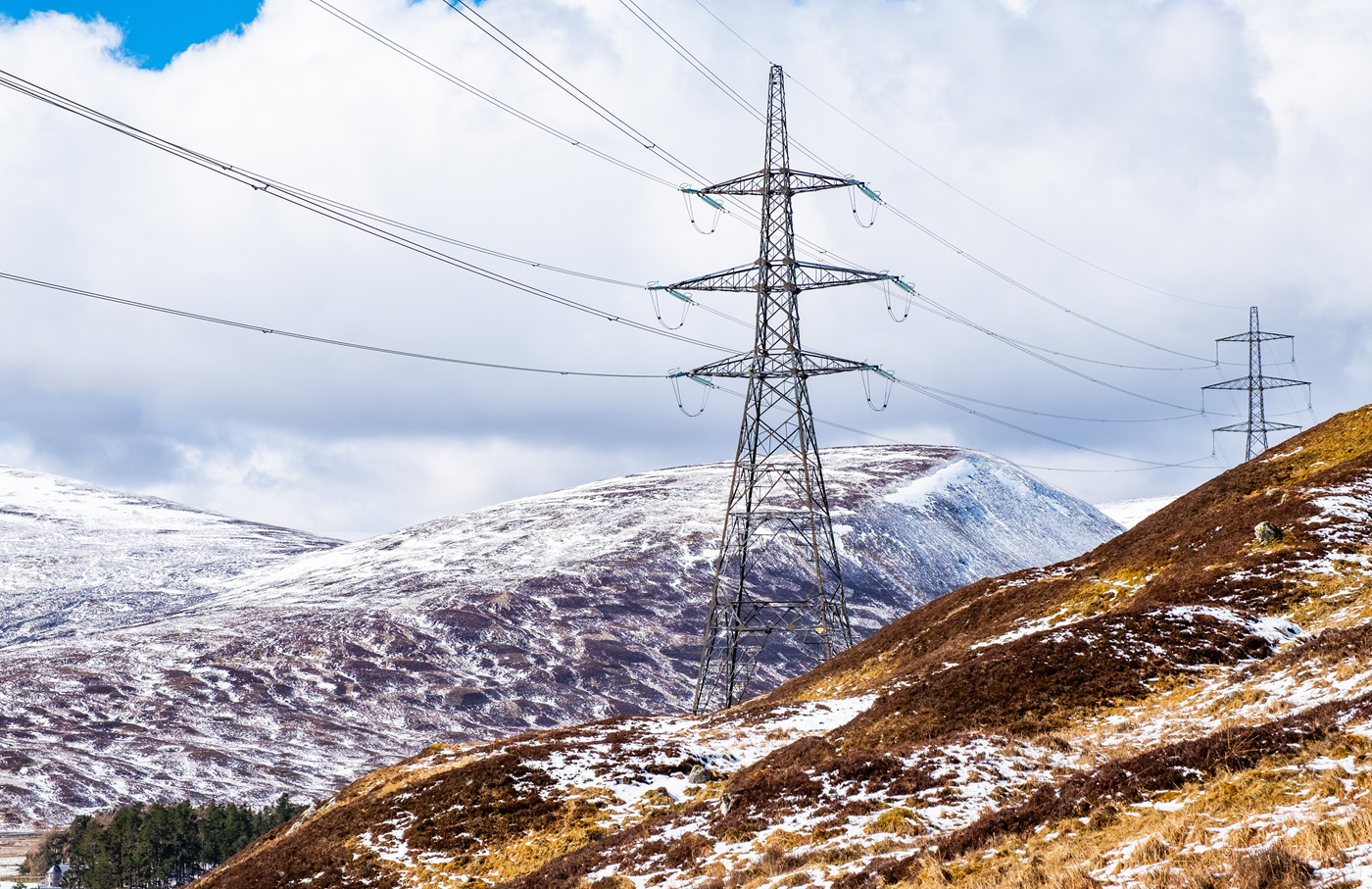New Alyth Substation Powers Up
-
New Alyth 275kV Substation energises after three years of construction
-
Project will help support the increase of new renewable energy generation to the grid
-
Project delivered over 50% increase in biodiversity
After almost three years of construction, SSEN Transmission teams are celebrating after the new Alyth Substation has been energised, marking a major milestone in the final phases of the project.
Working with their principal contractor Siemens BAM, the new £86 million substation forms a key part of SSEN Transmission’s reinforcement of the East Coast transmission network, which will help to support the connection of new renewable generation in the north of Scotland to the grid, enabling clean energy to be taken from where it is generated to where it is needed most.
Built to an operating capacity of 275 kilovolts (kV), the substation has been designed so that it can be increased to 400kV in the future with minimal operational changes. This increase to 400kV operation will deliver the full capacity increase required to facilitate major new renewable generation connections in the future.
The project is part of a significant number of projects on the East Coast of Scotland to strengthen the transmission network in the region, enabling the connection of new renewable generation to the grid and helping to facilitate the transition to net zero emissions.
Building the new Alyth Substation involved installing new 275 kV double busbar gas insulated switchgear (GIS) and reactive compensation equipment. The project also included the installation of a new dual-voltage 120-tonne SCT transformer - the largest component in the substation build - which required a specialist haulier with a 12-axle vehicle to safely deliver it from Dundee Quay to its final location at Alyth Substation last spring.
WATCH: The 120-tonne SCT transformer delivered to Alyth Substation
Throughout construction of the project the team were careful to manage any environmental impacts during the build, delivering significant biodiversity net gain on site throughout its construction. The studies forecast a 50% increase in biodiversity since teams first arrived in the area.
Teams have worked hard to create various ecological improvements around the site which has helped to encourage native species of flora and fauna around the perimeter of the substation compound, contributing to a positive net gain in biodiversity.
The ecological improvements include:
- Plans to plant almost 5,400 local native species of trees such as rowan, birch, oak, pine, hazel and blackthorn around the site perimeter, helping to enhance biodiversity while also creating a natural screen around the substation to minimise visual impact.
- Installing two bat boxes within the site’s tree perimeter to create roosting places for the species.
- Installing nine bird and red squirrel feeders around the site perimeter fence.
- Sowing native grass and meadow flower seeds over the site perimeter bunds to offer site landscaping and increase biodiversity for insects and other wildlife in the area. Not only does this help the local species of farmland birds with sheltering, nesting and feeding in the area, but it also helps to reduce the potential of soil erosion and limit any silt pollution.
- The team also created a number of habitat piles of fallen branches and wood from nearby trees, which are a great place for biodiversity.
The substation site is also home to a resident pair of Ospreys – named Harry and Flora – who return each year to nest at a purpose-built nesting platform on the far edge of the site.
The platform was created in 2014 as an alternative home for the ospreys ahead of the start of a programme of upgrade and reinforcement work to the transmission East Coast network, after the birds were spotted nesting at the top of one of SSEN Transmission’s 48-metre-high electricity towers which was scheduled for maintenance as part of the project.
Since the nesting platform was built, 20 chicks have successfully fledged the nest, and substation teams are hoping to welcome even more chicks this year when Harry and Flora are expected to return back when from their migration south in the spring. A live webcam will once again provide a birds-eye view of the local osprey residents, meaning the local community and osprey enthusiasts alike can follow their progress once again this year.
Commenting on the energisation of the new substation, SSEN Transmission Project Manager Muhammad Usman Faisal said:
“The energisation of the Alyth Substation marks a significant achievement in the lifespan of this project.
“It enhances the north-to-south power transfer capacity of our network, which not only helps us significantly to deliver a network for net zero emissions, but in turn improves our network’s operability, reliability, and safety.
“Our project team and contract partners have performed exceptionally well in delivering this project safely and to the highest standard, which is really testament to their dedication, expertise, and teamwork. As a team we are proud of the role we are playing in helping to deliver a network for net zero.
“I’d also like to thank the local community and stakeholders for their continued patience, understanding and support while we’ve constructed this project, without which this huge milestone would not have been possible. We will continue to keep them updated as we complete the remaining phases of work on site.”
SSEN Transmission teams are entering the concluding phases of their work, focusing on reinstatement, and completing the finishing touches for the site compound.
Learn more about the Alyth substation project here: https://www.ssen-transmission.co.uk/projects/project-map/alyth-275kv-substation--reactive-compensation/ .
